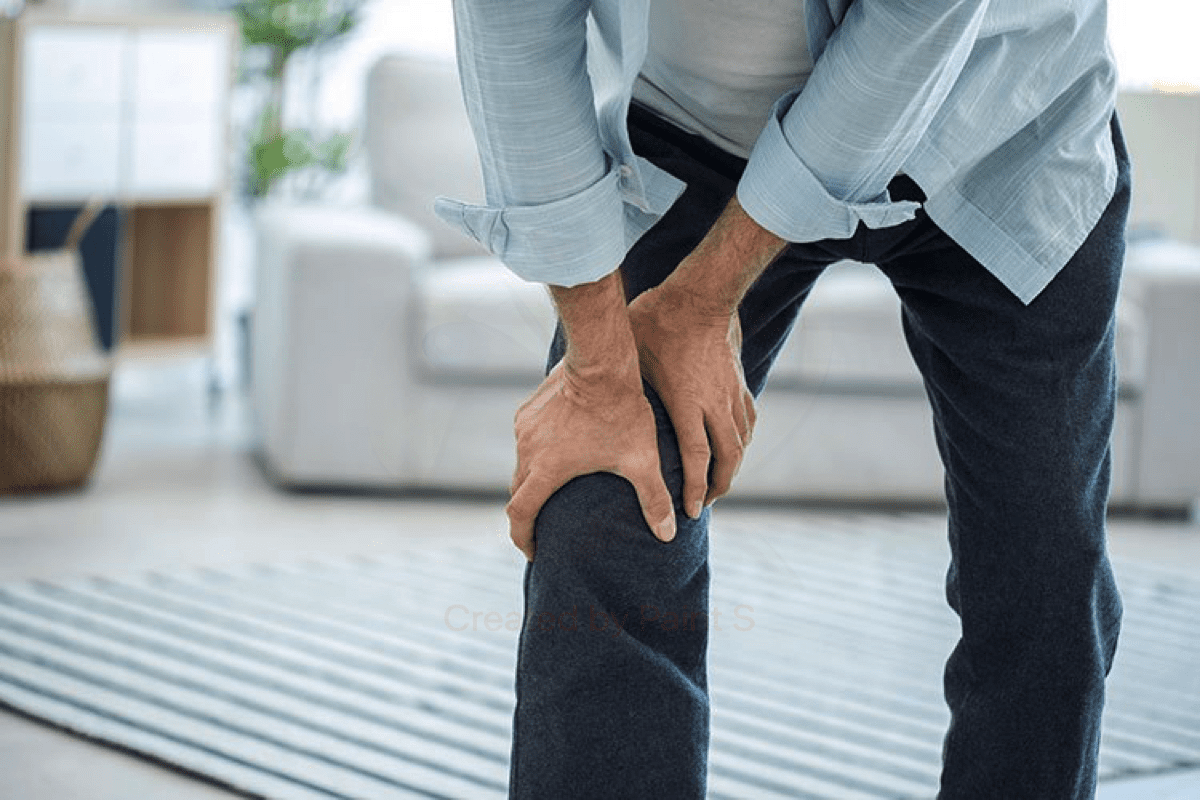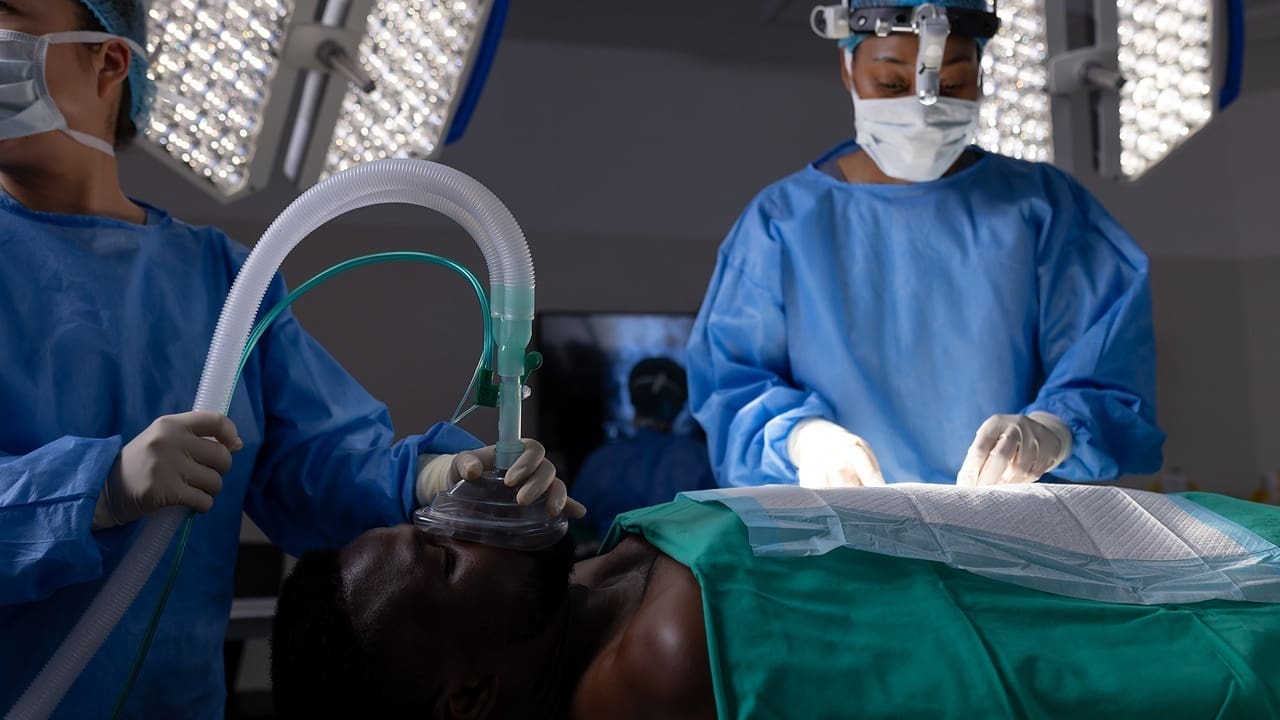Last Updated on November 26, 2025 by Bilal Hasdemir
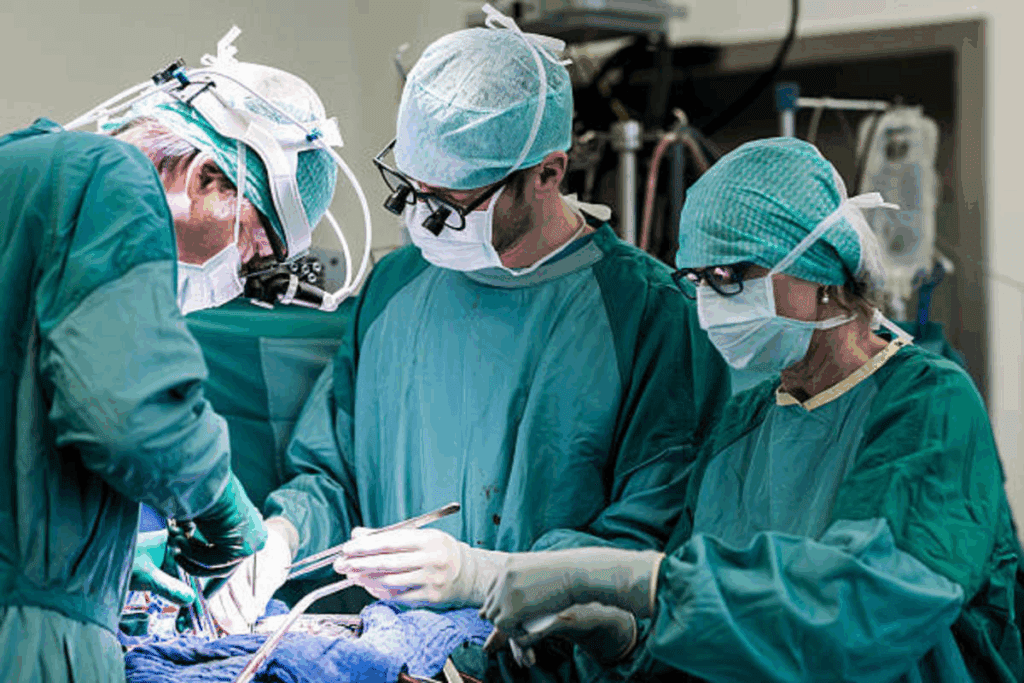
An aortic aneurysm is a serious condition that needs quick and effective treatment. This is to stop it from rupturing and causing death.
The main aim is to make the aorta stable and stop it from getting bigger. This helps lower the risk of it bursting.
There are different ways to treat it, from non-surgical methods to surgery. The choice depends on the size and growth of the aneurysm, and the patient’s health.
Key Takeaways
- Early detection is key in managing aortic aneurysms.
- Treatment plans are made just for each patient, based on the aneurysm and their health.
- Both non-surgical and surgical options are available for treatment.
- The goal of treatment is to prevent rupture and further growth.
- Expert care and global protocols help improve patient outcomes.
Understanding Aortic Aneurysms: A Critical Health Concern
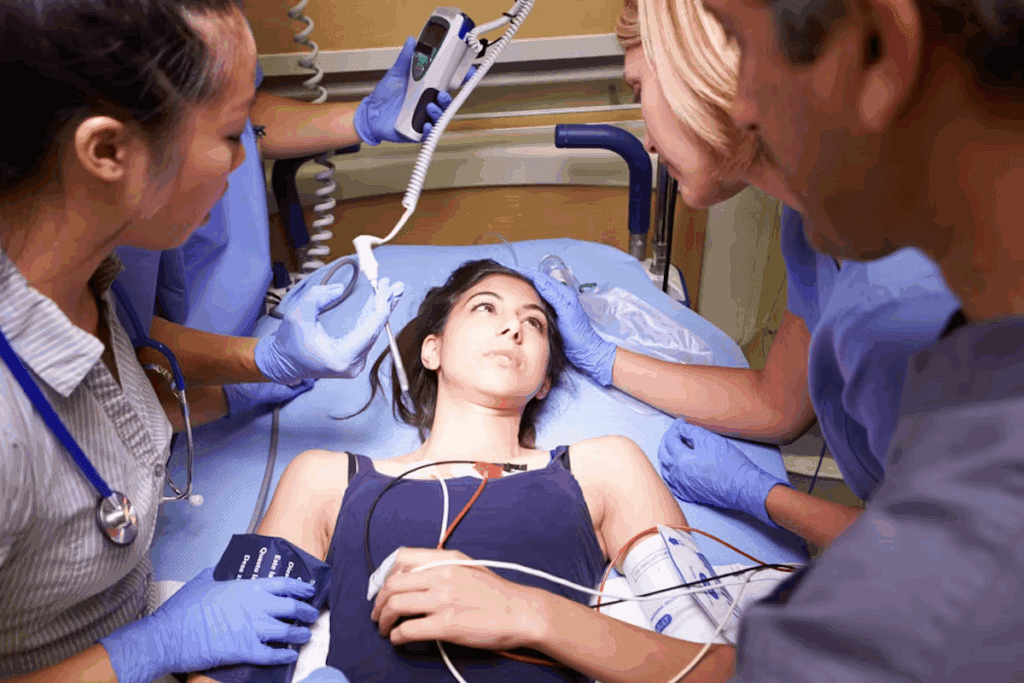
It’s important to understand aortic aneurysms to choose the right treatment and improve health outcomes. An aortic aneurysm is a serious condition that can lead to severe problems if not treated correctly.
What Is an Aortic Aneurysm?
An aortic aneurysm is when the aorta, the main blood vessel, bulges. This can cause a rupture, which is very dangerous. The National Center for Biotechnology Information says knowing about aortic aneurysms is key to managing them well.
Often, aortic aneurysms don’t show symptoms for a long time. Regular health checks are important for catching them early. Doctors use tests like ultrasound and CT scans to find aneurysms.
Types of Aortic Aneurysms: Thoracic vs. Abdominal
Aortic aneurysms are mainly divided into two types: thoracic and abdominal.
| Type | Location | Common Causes |
| Thoracic Aortic Aneurysm (TAA) | Aorta in the chest | Genetic factors, hypertension |
| Abdominal Aortic Aneurysm (AAA) | Aorta in the abdomen | Smoking, atherosclerosis |
TAAs are less common but can be more serious. Knowing the type of aneurysm helps doctors decide the best treatment.
Risk Factors and Causes
Several factors can lead to aortic aneurysms. These include:
- Smoking
- Hypertension
- Family history of aneurysms
- Atherosclerosis
- Genetic conditions such as Marfan syndrome
A doctor notes, “Smoking greatly increases the risk of abdominal aortic aneurysms.”
“Stopping smoking is vital to prevent aneurysms from getting worse and to lower the risk of rupture.”
It’s important to manage these risk factors to prevent and slow the growth of aortic aneurysms.
Diagnosing and Assessing Aortic Aneurysms
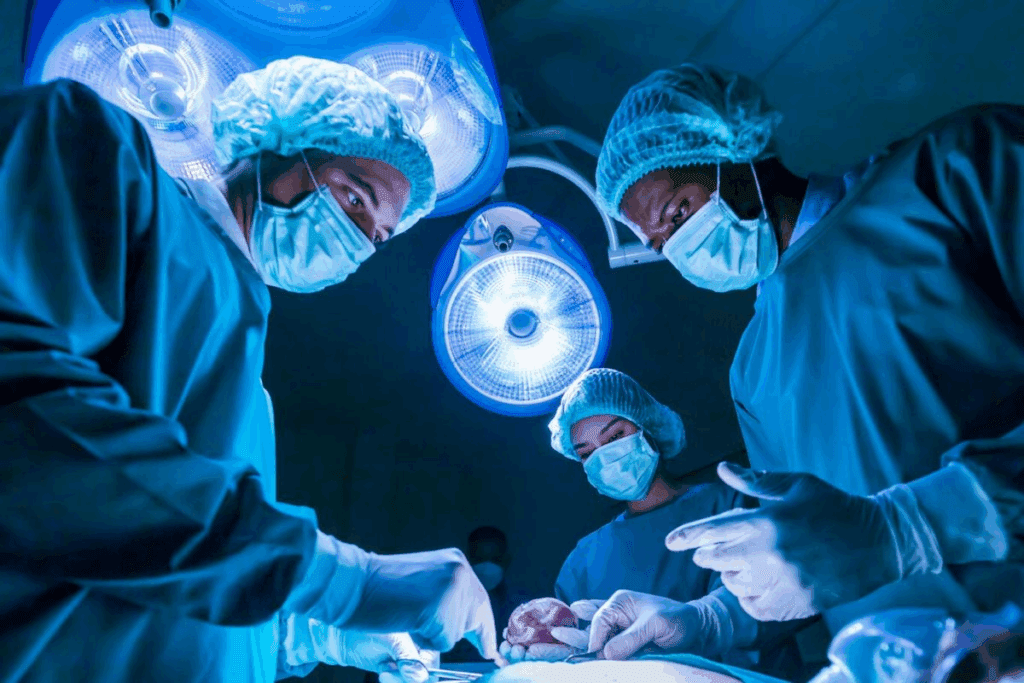
Getting an accurate diagnosis is key to managing aortic aneurysms well. Doctors use several tests to find out if you have an aneurysm, how big it is, and how risky it is.
Common Diagnostic Methods
There are a few ways to check for and measure aortic aneurysms. These include:
- Ultrasound: This method uses sound waves to make pictures of the aorta without any harm.
- Computed Tomography (CT) scans: They give detailed pictures of the aorta. This helps doctors see the size and where the aneurysm is.
- Magnetic Resonance Imaging (MRI): It makes clear pictures of the aorta without using harmful radiation.
Determining Aneurysm Size and Growth Rate
It’s important to know how big and how fast an aortic aneurysm is growing. This helps doctors figure out how likely it is to burst. They use imaging tests to keep an eye on the aneurysm’s changes over time.
| Diagnostic Method | Frequency | Information Provided |
| Ultrasound | Every 6-12 months | Size and growth rate of the aneurysm |
| CT Scan | As needed | Detailed images of the aneurysm and surrounding structures |
| MRI | As needed | High-resolution images without radiation |
Risk Assessment for Rupture
Doctors look at the size, how fast it’s growing, and other things to see if an aneurysm might burst. Big aneurysms and those growing fast are at higher risk.
By accurately diagnosing and assessing aortic aneurysms, doctors can pick the best treatment. This helps lower the chance of rupture and improves how well patients do.
Treatment Decision Factors: When to Intervene
Treatment for an aortic aneurysm varies from person to person. Doctors look at many things to decide the best treatment. This ensures each patient gets the right care.
Size Thresholds for Treatment
The size of an aortic aneurysm is key in deciding treatment. Aneurysms larger than 5.5 cm in diameter often need surgery. But, the decision can change based on the patient and where the aneurysm is.
For example, aneurysms in the upper aorta or those causing symptoms might need surgery sooner. Doctors weigh the risks of the aneurysm against the risks of surgery.
Growth Rate Considerations
The rate at which an aortic aneurysm grows is also important. Aneurysms growing fast (more than 0.5 cm per year) are at higher risk of rupture. They might need treatment sooner.
Watching how fast the aneurysm grows helps doctors decide when to act. Regular scans are key to tracking size changes.
Patient-Specific Risk Factors
Each patient’s risk factors are unique in deciding treatment. Age, health, family history, and other heart diseases are considered. These factors help doctors tailor treatment plans.
Younger patients or those with a family history of aneurysms might get treated sooner. On the other hand, those with many health issues might wait until the aneurysm is a bigger risk. This approach ensures treatment is safe and effective for each patient.
Non-Surgical Approaches to Treating Aortic Aneurysm
Non-surgical methods are key in managing aortic aneurysms. They help control growth and lower the risk of rupture. For many, a non-surgical plan is best, mainly for small, stable aneurysms.
Watchful Waiting and Surveillance Protocols
Watchful waiting means checking the aneurysm’s size and growth with tests like ultrasound or CT scans. This lets doctors keep an eye on it and decide when surgery might be needed.
- Regular imaging tests to monitor aneurysm size and growth
- Adjustments to surveillance frequency based on aneurysm characteristics
- Ongoing assessment of patient health and risk factors
Medication Management
Medicine is a big part of non-surgical care. It aims to control things that make aneurysms grow, like high blood pressure and cholesterol.
Key medications may include:
- Beta-blockers to reduce blood pressure and heart rate
- ACE inhibitors or ARBs to manage hypertension
- Statins to lower cholesterol and stabilize plaque
Lifestyle Modifications for Aneurysm Management
Changing your lifestyle is key to managing aortic aneurysms. These changes can greatly improve heart health.
- Smoking cessation to reduce cardiovascular risk
- Dietary changes to manage weight and blood pressure
- Regular physical activity tailored to the patient’s condition
- Stress management techniques to reduce blood pressure variability
By using watchful waiting, medicine, and lifestyle changes, doctors can manage aortic aneurysms well. Regular check-ups and adjusting the treatment plan are vital for the best care.
Open Surgical Repair for Aortic Aneurysms
For those with big or complex aortic aneurysms, open surgery is often the best choice. This method involves a big cut to reach the aorta. Then, the weak part is replaced with a man-made graft.
Procedure Overview and Techniques
Open surgery is a big deal, needing a big cut in the chest or belly. The surgeon clamps the aorta, removes the weak part, and puts in a new graft. The exact cut and method depend on the patient and the surgeon.
Key steps in open surgical repair include:
- Administering general anesthesia to ensure patient comfort
- Making a thoracotomy or laparotomy incision to access the aorta
- Heparinization to prevent clotting during the procedure
- Clamping the aorta to allow for graft placement
- Suturing the graft in place
Candidates for Open Surgery
Open surgery is best for big aneurysms (over 5.5 cm), symptomatic ones, or those at high risk of rupture. Each case is different, considering health, aneurysm size, and other conditions.
Benefits and Risks
Open surgery can last a long time and fix complex problems. But, it’s a big surgery with risks like infection, bleeding, and organ issues. Choosing the right patient is key.
| Benefits | Risks |
| Long-term durability | Surgical complications (infection, bleeding) |
| Ability to treat complex aneurysms | Organ dysfunction |
| Direct visualization and repair | Longer recovery time |
Recovery Timeline
Recovering from open surgery takes a long time, often weeks to months. Patients spend days in the ICU, then more time in the hospital. After going home, they must avoid heavy lifting and hard work for weeks.
Recovery milestones include:
- Initial recovery in the ICU
- Gradual mobilization and rehabilitation
- Follow-up appointments to monitor healing
- Return to normal activities over several months
Endovascular Approaches for Treating Aortic Aneurysm
Endovascular methods have changed how we treat aortic aneurysms. They are less invasive than traditional surgery. This makes them popular for their quick recovery times and fewer complications.
Standard Endovascular Aneurysm Repair (EVAR)
EVAR is a common method for treating abdominal aortic aneurysms. It uses a stent-graft inserted through the femoral arteries. This is done with the help of imaging to block blood flow to the aneurysm.
EVAR has many benefits. It requires smaller cuts, less pain after surgery, and shorter hospital stays. But, it needs regular check-ups to watch for issues like endoleaks.
Thoracic Endovascular Aortic Repair (TEVAR)
TEVAR treats thoracic aortic aneurysms. It’s similar to EVAR but for the thoracic aorta. A stent-graft is placed to block blood flow to the aneurysm.
TEVAR is great for those with complex anatomy or high surgical risks. It lowers the chance of paraplegia and other open surgery complications.
Advanced Endovascular Techniques
Advanced techniques are evolving beyond EVAR and TEVAR. They include branched and fenestrated stent-grafts for complex aneurysms near major vessels.
These methods help treat patients who were once not suitable for endovascular repair. This is due to their complex anatomy.
Advantages and Limitations of Endovascular Repair
Endovascular repair has many benefits. It has lower risks of death and complications compared to open surgery, mainly for high-risk patients. Yet, it has its own challenges.
Some drawbacks include the need for lifelong monitoring, the risk of endoleaks, and stent-graft failure or migration.
| Technique | Advantages | Limitations |
| EVAR | Minimally invasive, less postoperative pain, shorter hospital stay | Risk of endoleaks, need for regular follow-up imaging |
| TEVAR | Reduces risk of paraplegia, suitable for high-risk patients | Complex procedure, possible stent-graft issues |
| Advanced Techniques | Can treat complex aneurysms, more patients can be treated | More complex, higher costs |
In conclusion, endovascular methods are a big step forward in treating aortic aneurysms. They bring many benefits. But, it’s important to carefully choose patients and keep up with ongoing monitoring for success.
Emergency Treatment for Ruptured Aortic Aneurysms
A ruptured aortic aneurysm is a serious medical emergency. It needs quick action because it can be deadly if not treated right away.
Recognizing Symptoms of Rupture
It’s important to know the signs of a ruptured aortic aneurysm. This can save lives. Common signs include:
- Severe, sudden pain in the abdomen or back
- Low blood pressure
- Rapid heart rate
- Fainting or loss of consciousness
Seeing these symptoms means you need to act fast.
Emergency Medical Response
When you see the signs of a ruptured aortic aneurysm, call for help right away. This includes:
- Calling emergency services immediately
- Administering first aid, if possible
- Transporting the patient to a medical facility equipped to handle vascular emergencies
Surgical Interventions for Ruptured Aneurysms
Surgery is often needed to treat a ruptured aortic aneurysm. The main goal is to stop the bleeding and get blood flowing again. There are a few surgical options:
- Open surgical repair
- Endovascular repair
The type of surgery depends on the patient’s health and the aneurysm’s size and location.
Survival Rates and Outcomes
Survival rates for ruptured aortic aneurysms vary. They depend on how fast and well the patient gets medical help. Quick action can greatly improve chances of survival.
Good outcomes also come from:
- Rapid diagnosis
- Effective surgical intervention
- Post-operative care
Recovery and Aftercare Following Aortic Aneurysm Treatment
Recovering well after aortic aneurysm treatment is key to avoiding problems and living longer. This includes staying in the hospital, getting care after surgery, managing pain, rehabbing physically, and checking up with imaging tests.
Hospital Stay and Immediate Post-Operative Care
The first steps to getting better happen in the hospital. Here, doctors watch for any quick problems after surgery. How long you stay depends on the surgery and your health.
A study in the Journal of Vascular Surgery found that patients who had endovascular aneurysm repair (EVAR) stayed in the hospital less than those who had open surgery.
| Type of Surgery | Median Hospital Stay (Days) |
| Endovascular Aneurysm Repair (EVAR) | 3-5 |
| Open Surgical Repair | 7-10 |
Managing Pain and Discomfort
Handling pain is a big part of getting better after surgery. Doctors usually give pain meds to help with this.
“Pain management is a key component of post-operative care. Effective pain control can significantly improve patient outcomes and reduce the risk of complications.”
Physical Rehabilitation
Getting back to normal with physical therapy is important. It helps you get strong and move better. A good rehab plan can make a big difference in your recovery.
- Gradual increase in physical activity
- Physical therapy sessions
- Nutritional counseling
Follow-up Imaging and Long-term Surveillance
It’s important to keep an eye on the aneurysm with imaging tests. How often and what kind of tests you need depends on your treatment and health.
Keeping an eye on things long-term is also key. This makes sure the repair works well and catches any new problems early. Sticking to your follow-up plan is important for the best results.
Potential Complications and Their Management
It’s important to know about possible problems after treating an aortic aneurysm. Treatments like surgery and endovascular interventions aim to stop rupture and save lives. But, they come with risks.
Short-term Complications
Short-term issues can happen during or right after treatment. These might include:
- Infection
- Bleeding or hematoma
- Respiratory or cardiac issues
- Reaction to anesthesia
Managing short-term complications means watching closely and acting fast. For example, antibiotics fight infections, and more surgery might be needed for bleeding or other problems.
Long-term Complications
Long-term issues can pop up months or years later. Common ones include:
| Complication | Description | Management |
| Endoleak | Leakage into the aneurysm sac | Surveillance, possible additional endovascular repair |
| Graft Migration | Movement of the graft from its original position | Monitoring, possible additional intervention |
| Aneurysm Rupture | Rupture of the aneurysm despite treatment | Emergency surgical or endovascular repair |
When to Seek Medical Attention
It’s key for patients to know when to get help right away. Look out for:
- Severe pain
- Signs of infection (fever, redness, swelling)
- Shortness of breath or chest pain
Patients should learn about these possible issues. They should get help fast if they notice any worrying signs.
Conclusion: Living Well After Aortic Aneurysm Treatment
Patients can live active lives after aneurysm treatment with the right care. The success of treatment depends on follow-up care and lifestyle changes. Studies show that survival rates for elective aneurysm surgery have improved over time.
To get the best aortic aneurysm treatment outcomes, managing blood pressure is key. Avoiding heavy lifting or strenuous activities for 6 weeks is also important. This helps prevent complications and improves recovery chances.
Regular check-ups and imaging are vital to watch the aorta’s health. A healthy lifestyle and following recommended care can lead to a successful recovery. This way, individuals can live normally after aortic aneurysm treatment.
FAQ
What is the primary goal of treating an aortic aneurysm?
The main goal is to stop the aneurysm from rupturing. This is because a rupture can be deadly. The goal is also to manage symptoms and slow the disease’s progress.
How is the size of an aortic aneurysm determined?
Doctors use imaging tests like ultrasound, CT scans, or MRI to measure the aneurysm. These tests show the size and how fast it’s growing.
What factors influence the decision to treat an aortic aneurysm surgically?
Deciding on surgery depends on the aneurysm’s size and growth rate. The patient’s health and symptoms also play a role.
What is watchful waiting in the context of aortic aneurysm management?
Watchful waiting means regularly checking the aneurysm with imaging tests. This way, doctors can see if it’s getting bigger. They’ll decide if surgery is needed.
How does endovascular aneurysm repair (EVAR) differ from open surgical repair?
EVAR is a less invasive method. It uses a stent-graft to block blood flow to the aneurysm. Open surgery, on the other hand, requires a bigger cut and direct repair.
What are the benefits of endovascular repair for aortic aneurysms?
EVAR has fewer risks and shorter hospital stays. Patients also recover faster compared to open surgery.
How is a ruptured aortic aneurysm treated in an emergency setting?
Emergency surgery is the usual treatment for a ruptured aneurysm. This can be open repair or endovascular repair, depending on the situation.
What is the importance of follow-up imaging after aortic aneurysm treatment?
Follow-up imaging is key to check the aneurysm’s size and for any complications. This allows for quick action if needed.
Can lifestyle modifications help manage aortic aneurysms?
Yes, changes like quitting smoking and managing blood pressure can slow aneurysm growth. A healthy diet also helps.
How do you fix an aortic aneurysm?
Fixing an aortic aneurysm usually means surgery. This can be open repair or endovascular repair to prevent rupture and manage symptoms.
What is the treatment for an aneurysm in the aorta?
Treatment depends on the aneurysm’s size, growth rate, and the patient’s health. It might include watchful waiting, medication, or surgery.
How to stop an aortic aneurysm from growing?
To stop an aneurysm from growing, make lifestyle changes, take medication, and get regular check-ups. Surgery might be needed too.
What are the possible complications of aortic aneurysm treatment?
Complications can include bleeding or infection right after treatment. Long-term issues like endoleaks or stent-graft failure are also possible.
References
- Wu, Y., Ding, P., Yang, D., Chen, D., Luo, X., Zhang, W., Chen, J., & Zhang, H. (2025). Ascending Aortic Aneurysms: From Pathophysiology to Surgical Repair. Journal of Clinical Medicine, 14(19), 6993. https://www.mdpi.com/2077-0383/14/19/6993


